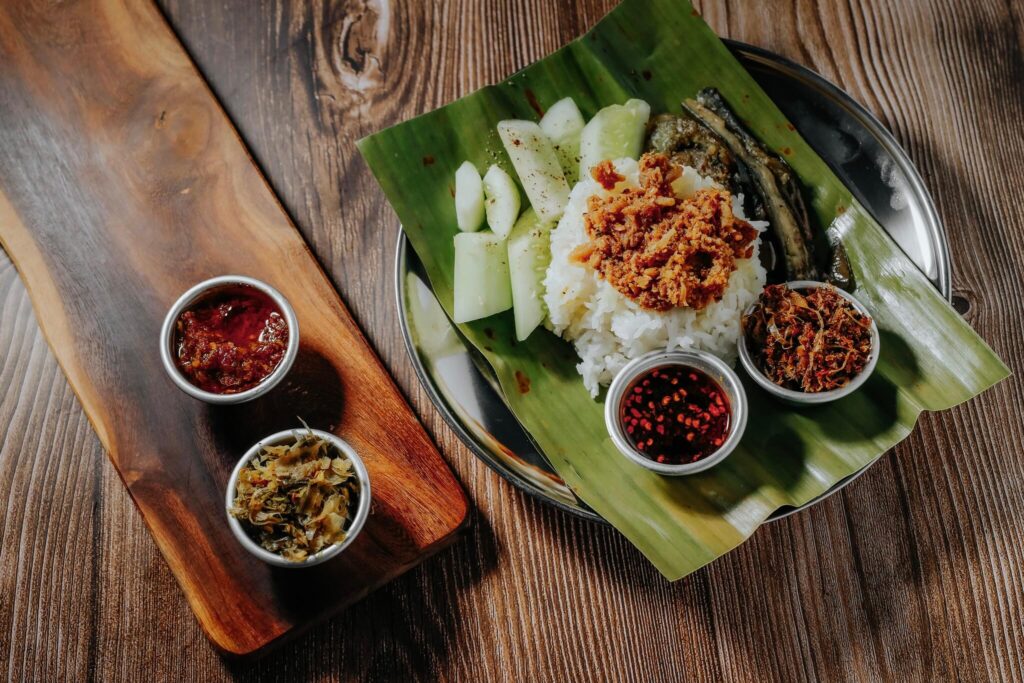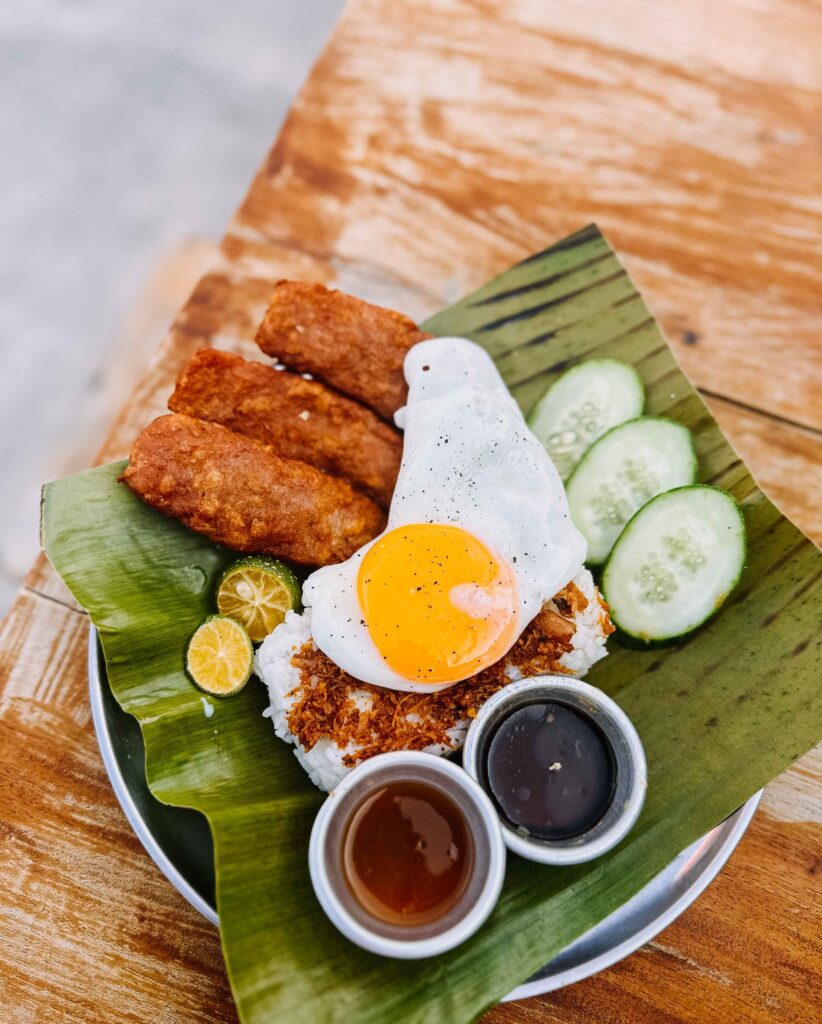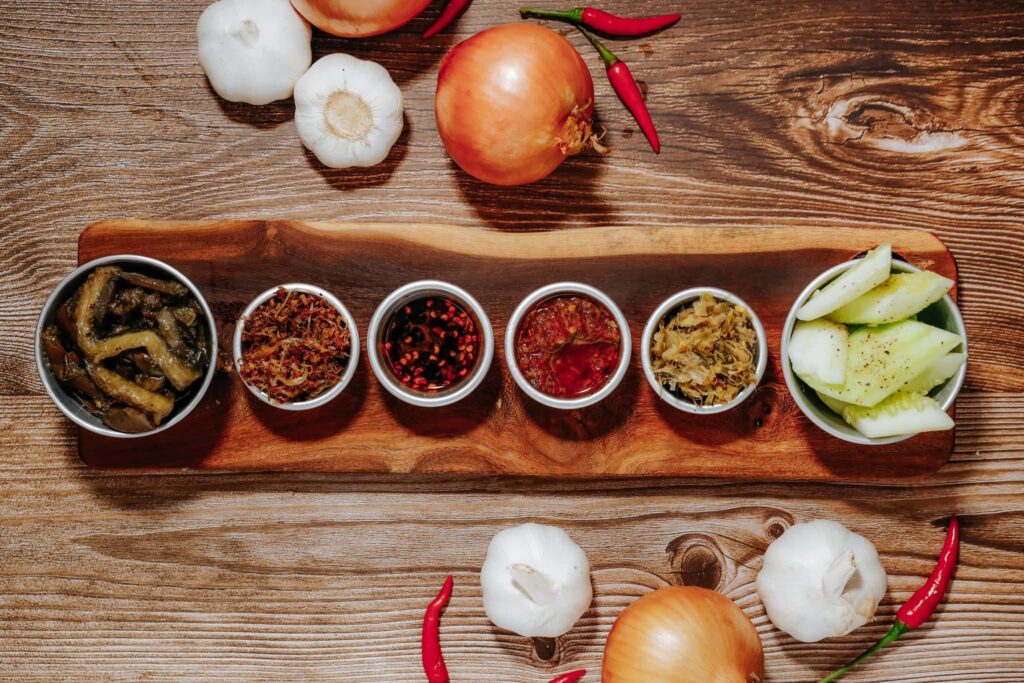
What is Pastil and Why It’s a Tourist Must-Have in GenSan

Ever been to Mindanao, especially to GenSan? If not, there’s a tasty treat waiting for you there – Pastil! It’s a simple yet delicious dish that locals love, and you will too.
What is Pastil?
It is a Filipino-packed rice dish, a delightful combination of steamed rice and a savory meat or fish topping, all neatly wrapped in banana leaf. The presentation is a nod to the country’s rich history and the importance of rice in Filipino culture.
The dish is especially popular in Mindanao, where it’s a go-to meal choice for many, especially among Muslim Filipinos. Its affordability and delicious taste have made it a favorite street food, with vendors offering it to eager customers looking for a quick and satisfying meal.
Before you proceed, check out our article on the best-recommended hotels in GenSan or our tips when riding the tricycle.

Image source: Hinimay – The Original Pastil ni Ella
What is pastil made of?
The heart and soul of Pastil is its flavorful filling known as ‘kagikit’. This can be shredded beef or chicken that’s been sautéed with spices, garlic, and onions. It was mostly chicken pastil at first, which obviously had shredded chicken on top.
There’s a fishy twist made with grilled fish and coconut for seafood lovers.
And some who crave a kick come with a spicy chili punch. It is halal, which means no pork is ever used.
The rice used in it isn’t your everyday kind. It’s combined with another type of rice, ensuring it sticks together just right.
Once prepared, this rice forms the base, is topped with the ‘kagikit’, and then snugly wrapped in a banana leaf. Some even boast a vibrant yellow hue, all thanks to a sprinkle of turmeric.
Why is it wrapped in banana leaves?
Using banana leaves as a wrapping material for food is a practice steeped in tradition, and it’s not just about aesthetics or tradition; there are practical and beneficial reasons behind it.
- Natural Preservation: Banana leaves have inherent properties that help preserve the food. Their waxy inner coating acts as a barrier, sealing in the food’s natural moisture and flavors. This keeps the food fresh and enhances taste by locking in the juices.
- Spill Prevention: The sturdy nature of banana leaves ensures that the food inside remains secure. Whether it’s a liquid-based dish or something more solid, the leaves prevent any spillage, making it convenient for both vendors and consumers.
- Ease of Wrapping: The generous size of banana leaves is a boon for food wrapping. Their broadness allows for multiple folds, ensuring the food is wrapped tightly and securely. This is especially beneficial for larger portions or when wrapping multiple items together.
- Cost-Effective: From a business perspective, banana leaves are a win-win. They’re abundant in many regions and significantly cheaper than modern packaging materials like paper plates or plastic containers. This makes them an economical choice for street vendors and traditional restaurants alike.
- Eco-Friendly: In an age where sustainability is becoming increasingly important, banana leaves stand out as an eco-friendly alternative to disposable plates and containers. They are biodegradable, leaving no trace behind, unlike plastic which can take hundreds of years to decompose.
- Cultural Significance: Beyond the practical benefits, using banana leaves has cultural and traditional significance in many regions. It connects the dish to its roots and offers an authentic experience beyond just taste.
What are the different toppings for pastil?
In the beginning, chicken strips were the primary topping for the Pastil. This classic choice was beloved by many and set the standard for what many considered the authentic experience.
The Seafood Shift
As times changed and tastes evolved, tuna shreds began making an appearance atop the steamed rice.
Given the Philippines’ abundant coastal regions and the popularity of tuna in places like GenSan, it’s no surprise that this seafood variant became a common sight.
Modern Twists
Today, restaurants and street vendors are experimenting with flavors like curry and adobo as toppings.
These contemporary takes, while delicious, have sparked a debate. These new variants might stray too far from the traditional essence for purists. They argue that such modern twists don’t truly honor the dish’s cultural roots.
However, these new flavors are a welcome addition for many others, especially the younger generation or those less acquainted with the dish’s history.
They see it as a testament to Pastil’s versatility and ability to adapt to modern tastes. After all, good food is good food, and if it tastes great, they’re buying!

Image source: Hinimay – The Original Pastil ni Ella
Tasty Add-Ons to consider
While the combination of rice and meat wrapped in banana leaves is a treat, locals have found numerous ways to elevate the experience:
- Hard-boiled Eggs: One of the most popular additions are hard-boiled eggs. It complements the dish beautifully, adding texture and flavor.
- Cucumbers: To counterbalance the richness of the Pastil, many opt for sliced cucumbers. Their refreshing crunch provides a delightful contrast, making every bite a harmonious blend of flavors.
- Hot Garlic Chili Sauce: A generous drizzle of hot garlic chili sauce over Chicken Pastil is a game-changer for those who enjoy a spicy kick. It enhances the taste and adds an exciting heat element to the dish.
- Sauteed Eggplant: A softer, more subtle addition is sautéed eggplant. Its savory profile pairs wonderfully with Chicken Pastil, offering a melt-in-the-mouth experience that many adore.
- Shrimp Paste: Shrimp paste is a bold choice for the adventurous palate. This salty condiment introduces a unique depth of flavor to Chicken Pastil, making it even more memorable.
- Soy Sauce: No Chicken Pastil experience is complete without soy sauce. A staple in many Asian cuisines, soy sauce’s salty and umami notes are necessary when savoring this delicacy. Whether drizzled on top or used as a dipping sauce, soy sauce complements Chicken Pastil perfectly.
What is the use of Pastil?
It’s often said that Pastil is GenSan’s top comfort food. Whether grabbing a bite alone or sharing with a friend, it’s affordable. And the best part? No dishes to wash afterward!
The Budget Meal of the Masses
With rising living costs and education, many students and working professionals always seek affordable yet satisfying meals.
Enter Pastil. This dish has become the go-to budget meal for high schoolers, college students, and even those who’ve entered the workforce. It’s filling, delicious, and doesn’t burn a hole in the pocket, making it a popular favorite.
The “Survival Food”
For students navigating the challenges of academic life, especially those facing financial constraints, Pastil is more than just a meal; it’s a lifeline.
Fondly termed the “survival food”, it’s the dish many students rely on to get them through long study nights, tight budgets, and times when ends just don’t meet. It’s the dish that’s seen them through highs and lows, acting as a constant in their ever-changing student life.

Image source: Hinimay, the original pastil ni Ella
Is pastil a snack?
For the locals, Pastil isn’t just something you munch on between meals. It holds a more substantial place on the dining table. Rich in flavors and packed with ingredients, it’s hearty enough to be considered a full meal. The combination of rice, meat, or fish, and sometimes the added extras, ensures that it’s both filling and satisfying.
A Friendly Heads-Up for Tourists
While most places serving Pastil in GenSan offer mouth-watering dishes that live up to the reputation, there are a few exceptions to the rule.
Not every vendor or eatery guarantees the same level of quality and satisfaction. While many serve up delectable Pastil that hits all the right notes, there are instances where the preparation might fall short, leading to a dish that doesn’t quite meet the expectations set by its more delicious counterparts.
However, it’s essential to note that these are just a few outliers. The vast majority of GenSan’s Pastil vendors take immense pride in their craft, ensuring that each serving is as delightful as the last.